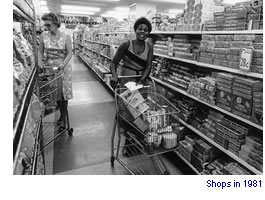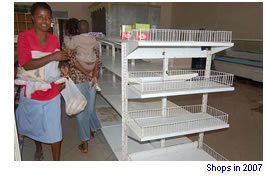Hard conversations: Critiquing Zimbabwe’s opposition party
Thursday, November 22nd, 2007 by Amanda AtwoodI’ve been thinking a lot lately about disillusionment. About the value of careful, thoughtful assessment of a situation, and the dangers of both a too hardened cynicism, and a too softly idealistic heart. As a former MDC activist and staff member, I’ve become increasingly wary of many of the activities and decisions the party has undertaken. There is a part of me that is angry about that – an emotional part of me that feels betrayed, duped, my idealism taken advantage of. But I recognise that while passionate, whole hearted idealism has its attraction, perhaps a better contribution to Zimbabwe’s future is to be more constructively critical, thoughtfully pragmatic, and honestly questioning.
Recent actions by the Movement for Democratic Change (MDC), including the revamping of the National Women’s Executive, and reports of violence outside the MDC headquarters on the weekend have added to my wariness.
But there is a tension in the pro-democracy movement around expressing one’s dissatisfaction with the MDC. It’s seen as disloyal, or unhelpful. There is a general belief that “anything but Zanu PF” will do, and in the past, being too critical of the MDC was in some circles an unpopular position.
I’ve been pleased to see that shifting, not because I harbour a grudge against the MDC. Rather, it’s because I know that, in my own life, it’s when others are demanding of me, or challenge me to do better, that I pull up my socks a bit. I suspect organisations and political leaders behave similarly. Why should we settle for less? It is when we expect more from them that they excel.
Comments on the Zim Fight On discussion list today gave me a glimmer of hope. Quoting a New Zimbabwe article, Briggs Bomba pointed out some recent quotations by National Constitutional Assembly Chairperson Lovemore Madhuku in which he was critical of MDC President Morgan Tsvangirai, and sceptical of his capacity to govern Zimbabwe.
As Briggs points out,
The most important point I think is that if more people were to become as courageous as Madhuku has just done then the future of Zimbabwe’s democratic struggle can be saved. Otherwise if people keep playing it safe, afraid to express opinions they hold, we are going to be stuck with a sterile, slowly disintegrating and totally paralysing opposition force, closing off space to genuine new progressive initiatives yet completely incapable of championing the democratic struggle.
Comments on American immigration policies by Melissa Goodman in the Mail & Guardian this week made me think of the MDC. A small substitution of Goodman’s words is some useful advice for us here: “What the MDC needs most is to be engaged with others and open to criticism, not isolated from it.”
At its root, the word “conversation” means turning together; it’s a two-way process. The MDC must be open to criticism, and must welcome it with the spirit in which it is intended. To view it as thoughtful concern from people with a vision of the new Zimbabwe we could have if things were done differently. At the same time the rest of us must be committed to voicing our concerns without worrying about what others will think of us, or that our opinions might be unwelcome or unpopular. Not voicing our concerns will make us complicit in settling for less.











